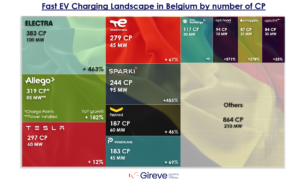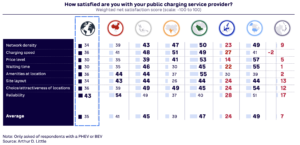The European Union’s Alternative Fuel Infrastructure Regulation (AFIR) has set ambitious targets for developing a robust and dense public charging network for heavy-duty vehicles (HDVs) across the EU by 2030. The regulation, which came into force on 13th April 2024, mandates member states to install dedicated charging infrastructure for HDVs every 60 km along main highways and every 100 km along secondary highways. However, the ‘one size fits all’ approach of the AFIR has raised concerns about its adequacy in addressing the varying truck and coach activity across different member states, regions, and road sections.
Disparities in Charging Infrastructure
The AFIR targets may result in a disparity where some member states have an insufficient charging infrastructure to meet demand, while others deploy chargers that will hardly ever be used. Transport & Environment (T&E) modelled a ‘tailored’ charging roll-out approach to realign the AFIR targets to the actual needs, adapting the required installed capacity to the projected local electrified traffic volumes. This approach aims to ensure that charging infrastructure is deployed in a way that matches real-world traffic data and projected battery electric fleet sizes.
Forward-Looking Grid Capacity and Planning
T&E recommends that EU member states make proactive grid planning a priority. National Regulatory Authorities (NRAs) should ensure that Transmission and Distribution System Operators (TSOs and DSOs) expand their capacities in anticipation rather than in reaction to demand. Streamlining and harmonising administrative processes for grid connections is also crucial to facilitate the quicker setup of charging infrastructure. This includes setting clear timelines for connection requests and making capacity maps easily available to prospective charging providers.
Efficient Use of Public Funds
Public funding should be deployed in a non-market distorting manner to bridge the gap at initially unprofitable locations, ensuring timely and comprehensive network coverage. T&E suggests fast-tracking the implementation of the Renewable Energy Directive’s (RED III) crediting mechanism to support early-stage charging infrastructure until a sustainable market-driven model is viable. Smart tendering strategies that bundle high and low utilisation locations are also recommended to avoid creating operational subsidies dependencies and prevent monopolistic control over charging networks.
Stakeholder Engagement and Collaborative Planning
Continuous engagement with relevant stakeholders, including vehicle manufacturers, Charge Point Operators (CPOs), grid operators, and public authorities, is essential for successful infrastructure development. This collaborative approach ensures that the infrastructure development is responsive to the specific needs and capabilities of each region.
Market-Led Infrastructure Deployment
While initial public support is necessary, the long-term goal should be to transition to a market-led deployment strategy. This will ensure that infrastructure development is sustainable and capable of adapting to evolving market conditions without continuous public financial support.
Sufficiency of AFIR Targets
T&E’s analysis indicates that from a macro perspective, the 2030 AFIR target could cover 130% of the public charging needs under the ‘Current Policies’ scenario. However, under the ‘Industry Plans’ scenario, the mandated charging infrastructure might only cover 71% of the public charging needs. At the member state level, significant disparities exist, with some countries like Cyprus potentially having double the required infrastructure, while others like Austria could have only 16% of the needed infrastructure by 2040.
Adjusting Power Output to Actual Demand
T&E emphasises the need to tailor AFIR targets to actual projected needs, varying significantly among member states. This involves constructing fewer but higher-powered charging hubs in some regions and maintaining flexibility to address future demand surges. A market-led approach involving all stakeholders is recommended to align public charging requirements with projected HDV traffic and adapt AFIR targets accordingly.
Ensuring the Grid is Fit for Truck Charging
Proactive grid planning is critical, with NRAs ensuring grid operators accommodate the growth in public charging demand. Grid capacity maps and streamlined administrative processes are essential for efficient infrastructure deployment. Harmonising and digitising these processes at the EU level is crucial to avoid delays and ensure transparency.
Efficient Public Support Schemes
Public support schemes should be designed to avoid market distortion while ensuring seamless travel throughout Europe. Fast-tracking the RED III crediting mechanism and using smart tendering strategies can help achieve this goal. Public funding should also compensate for market failures, ensuring comprehensive network coverage and avoiding monopolistic control over charging infrastructure.
The AFIR’s ‘one size fits all’ approach has significant shortcomings, and a tailored strategy is essential for effective implementation. By adapting targets to actual demand, ensuring proactive grid planning, and using public funds efficiently, the EU can achieve a robust and sustainable HDV charging network by 2030. Continuous stakeholder engagement and a market-led deployment strategy are crucial for long-term success.
Source: Transport & Environment




